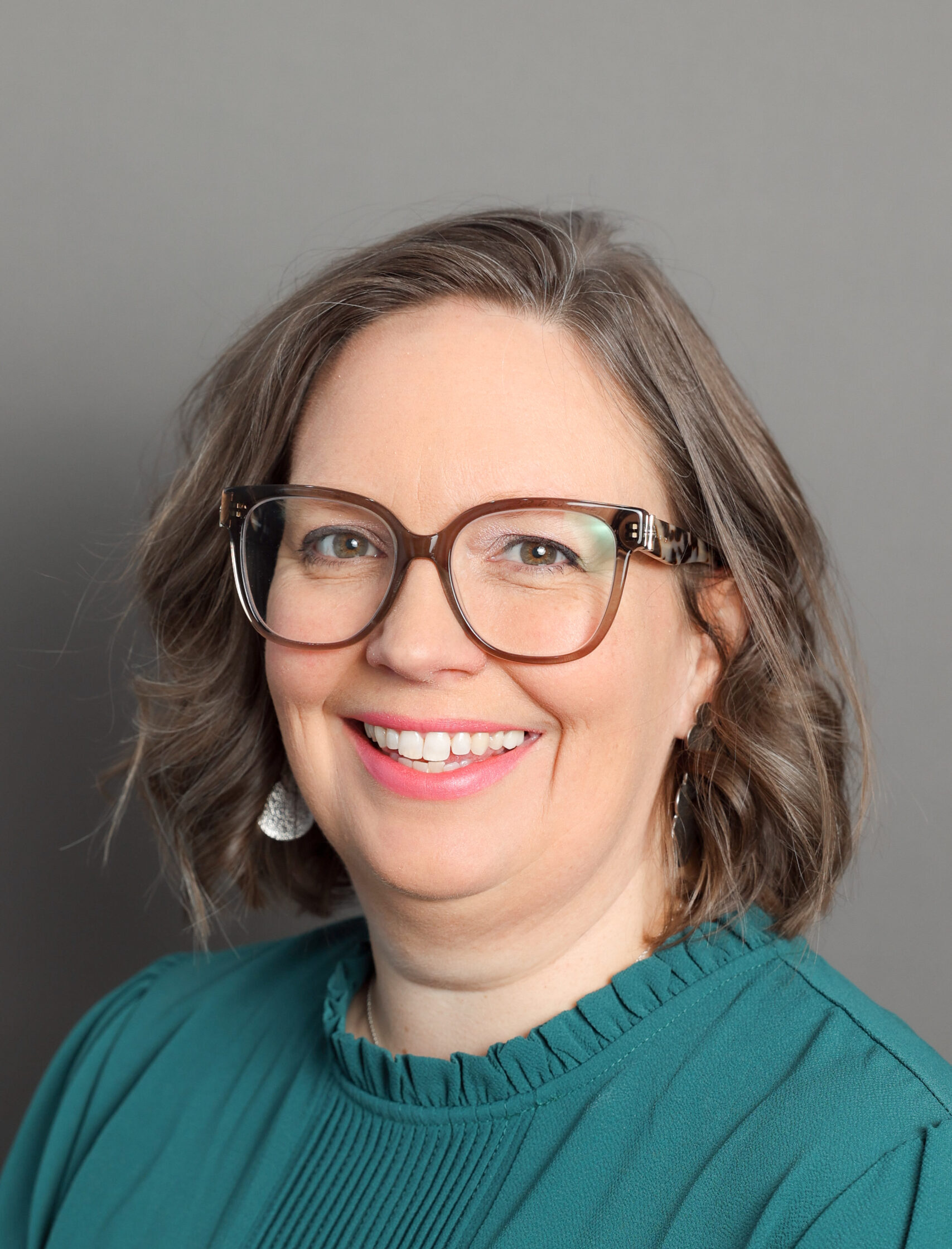Strengthening connections: A collaborative visit to Cheyenne River and Standing Rock

In April 2024, we visited the Cheyenne River and Standing Rock Native Nations with MASS Design Group, Partnership with Native Americans (PWNA), Mennonite Disaster Service and Margaret A. Cargill Philanthropies. Our goals were to understand the communities’ challenges, learn about tribal disaster management, explore infrastructure needs and strengthen tribal resilience through better inter-organizational cooperation.
I (Cari) was excited to start our trip at United Tribes Technical College (UTTC) in Bismarck, North Dakota, anticipating that this would be a good place to ground our conversation about the communities and people of the Native Nations we were about to visit. Here, we were reminded not only of the history of the people who had occupied these lands long before white settlers arrived but also of the beauty and strength of their stewardship of the land. However, I was unprepared to be faced with another story of suffering, of Japanese men separated from their families and forced to survive in the harshest of conditions.

To acknowledge this painful past, UTTC is building a Japanese American Internment Memorial Courtyard.
“This memorial, the first of its kind to acknowledge solidarity between Native and Japanese American communities, is slated to catalyze a broader reconciliation process around intersecting systems of oppression in America,” the college said.
This was a stark reminder of the complex history of these places and the layers of systemic racism and marginalization. And, also, of the deep importance of the power of empathy as the Native community has become a place for the descendants of those held prisoner here to find reflection, solidarity and healing.
Insufficient resources and basic necessities
With this important consideration in mind, we visited the community of Cherry Creek on the Cheyenne River Reservation, which is South Dakota’s oldest continuously inhabited area. Here, we got a glimpse of how remote these Native reservations are in terms of housing, transportation, connectivity and infrastructure.
- Housing: A lot of the homes in the community have sustained severe damage and are uninhabitable. Despite recurring disasters since 1996, repairs have not been made to address ongoing damages. Unaffordable home insurance and improper titles challenge residents’ ability to obtain FEMA assistance, and their remote location further complicates matters. With only 70 houses available for a population of 300, these damaged homes, housing multiple generations, are still occupied despite their unsafe condition.
- Transportation: A lack of transportation infrastructure makes accessing essential goods and services challenging, with unstable dirt roads stretching over 35 miles and travel times of up to two hours. Community members have to pay excessive fees—often their last dollars—for rides into town, so vital resources can’t be reached.
- Infrastructure and connectivity: Furthermore, the lack of transportation makes it hard for sole providers to get to work, further straining their finances. Due to a lack of cellular service, communication with the outside world is limited on the reservation. It can take fire trucks and ambulances up to two hours to reach a community in a crisis situation, which highlights the need for better infrastructure and connectivity.
Cherry Creek and many rural, isolated Native communities across the Northern Plains, face significant needs for things that many of us take for granted and challenges we’re prone to believe easy solutions exist for. But for communities whose every day is a struggle to survive – communities where I heard people say things like, “I have lived through three or maybe more tornadoes, and I am still here” and “as long as we stay poor, they will keep us alive” – food, water, shelter and transportation need to come first.
It’s all connected
We visited with leaders from tribal colleges, youth development organizations, housing specialists, emergency management, cultural preservation offices, and government and community development organizations. From all, we heard similar themes and saw work toward sovereignty and indigenized ways. We saw examples of workforce housing, community gardens, cultural education and art installations, all being done in ways that support sovereignty. We heard stories of community members seeking training in life-saving measures in order to respond when needs arise.
Each challenge was interconnected and complex and will require multi-layered responses, but these communities have been and will continue to find solutions, at times demanding their sovereignty, and at others working diligently to break down colonized influences and create opportunities that will serve them and generations to come.

Resilience or survival?
We discussed the concept of “resilience” in Standing Rock. One tribal elder highlighted that their community is more in “survival mode” than truly resilient.
“How can you be resilient without basic resources?” the elder questioned.
How can resources be sustained in future disasters? The community is already struggling to access basic necessities, so when disasters strike, it feels like a continuous cycle of scrambling to survive.
In the face of poverty and resource scarcity, we learned that Native communities draw strength from their cultural heritage and collective spirit. The same elder told us that to him, “resilience is the ability to retain values through adversity—to remember where we’ve been and how we are still here.”
Keeping kinships strong and relying on community support is critical to survival. Native communities prove how strong the human spirit can be by honoring their cultural traditions, cultivating strong community ties, adopting sustainable practices and empowering future generations.
Different communities, similar challenges
In my previous work with marginalized communities, primarily Black and Hispanic communities, I (Juanicia) have seen struggles similar to those faced by Native communities. Both groups live in disaster-prone areas, like flood plains or areas with poor infrastructure, and their homes aren’t built to withstand natural hazards. Disaster response resources are often too slow or not enough, worsening already challenging situations.
These communities’ struggle to get back on their feet is further complicated by a lack of money, insurance and government assistance. Plus, they’re often unprepared for disasters, lacking early warnings and emergency supplies. Their ability to respond and recover effectively from such events is further hindered by communication barriers, distrust in authorities and the lack of culturally sensitive aid. The inability to fully recover after disasters is a tough cycle that keeps repeating, revealing deeper issues rooted in ongoing discrimination and historical neglect.
My firsthand experience with these challenges has intensified my desire to learn more and to actively support Native communities. It’s clear that there’s a lot to do, and every contribution counts.
What funding organizations need to recognize?
Supporting Native communities’ sovereignty and agency is essential for addressing historical injustices and overcoming systemic inequality. It preserves Indigenous cultures and fosters socio-economic development. Empowering tribes with the means to assert their self-determination enhances their autonomy and resilience.
“We know what our community needs. We just need the money and resources to do it.”
- Funders should take a collaborative, listening approach with Native leaders to effectively tackle complex issues like housing, resource access, and support food sovereignty, infrastructure, and capacity building.
- It’s essential to support systems that help community leaders work together, enhancing tribal initiatives and integrating them into wider community strategies.
- Native nations need ongoing support past the initial funding phase to build lasting resilience and sustain their impact.
We are always open to conversation about how together we can support Native Nations and rural, communities across the country as they recover from a disaster. If you are interested in learning how you can help, please reach out.

